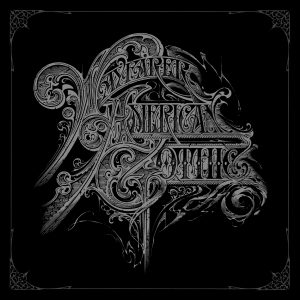Getty Image/Derrick Rossignol
Metro Boomin has had a truly incredible run in 2023. Early in the year, he produced the soundtrack for Spider-Man: Across The Spider-Verse, spawning the massive hit singles “Am I Dreaming,” “Calling,” and “Self Love.” Then, he remixed Young Thug’s Business Is Business, the rapper’s first album since his incarceration last year.
Last night at the Dolby Theater in Hollywood, Metro put the coup de grace on his stellar 2023 with a performance with Red Bull Symphonic, a fascinating experiment in live music determined to break down the walls between stodgy “classical” music and contemporary hitmakers.
50 years ago, hip-hop culture had to fight for its music to even be recognized as such. Of the various insults leveled at the then-nascent genre, one of the most common was that “they don’t even play instruments.”
Which is (sort of) true! One of the things that made hip-hop so accessible and appealing was that it bypassed the often expensive and elitist requirements of traditional music. All you needed to be considered a musician was two turntables and a microphone.
And while that caveat didn’t necessarily apply to the earliest rap hit, “Rapper’s Delight,” it has largely remained true throughout the past five decades. While rap and hip-hop eventually earned the respect of the public as art, there has still remained a smidgen of difference between the “low class” origins of most hip-hop and the highbrow ambitions of, say, a symphony orchestra.
But that too has been changing rapidly, especially within the last few years. As more rap pioneers such as Nas have begun to perform their classic, seminal albums backed by orchestras, yet another gap is being bridged between “high” and “low” art and cultures that have often kept each other at arm’s length.
Metro’s performance at the Dolby Theater certainly did that. Conducted by Anthony Parnther, a small but mighty orchestra embellished and emboldened some of the St. Louis producer’s biggest hits, from Future’s “Mask Off” to the more recent Spider-Man standouts.
I was personally intrigued by the diversity of the orchestra. During the summer, I’d gone to watch Japanese conductor Joe Hisaishi at the Hollywood Bowl, and both my girl and I were struck by how… monochromatic the orchestra was at that show. “Where are all the Black people,” we wondered. (There were two — they were on drums. Insert eye roll here.)
It was clear that Red Bull Symphonic’s organizers wanted to avoid such a faux pas. After all, if there is a disproportionate paucity of Black traditional musicians, it’s because they aren’t getting opportunities — either to perform or to see people who look like them perform.
Beyond simply widening the scope of possibilities for the audience, though, Metro’s performance offered a chance for cultures to clash in eye-opening and somewhat amusing ways.
Here was an audience that probably doesn’t spend too much time in theaters like the Dolby; twice, I had to put on my usher hat to help fellow concertgoers find their seats in the mezzanine, and the dress code for the evening blurred the lines between evening wear, streetwear, and Halloween chic.
A few seats over, one attendee wore what I can only describe as Milan runway meets Murphy Lee, complete with the Phantom Of The Opera mask the St. Lunatic was known for sporting in the aughts and a loose suit that reminded me of a pleated curtain at a fancy hotel.
Women wore everything from couture to jeans, while guys — being guys — did their best to dress up their usual concert ensembles. (No but seriously, guys, can we make just like 25 percent more effort?)
Meanwhile, overlooking the stage from his customary perch on a raised DJ booth, Metro looked dapper in his formal jacket (with tails!), working the crowd on the mic like a typical day at the office. The contrast was funny but cool. Here was a DJ, more or less leading an orchestra, hyping the audience as though they were dancing in a sweaty club instead of seated in a fancy theater like they showed up for Hamilton.
Naturally, Metro brought a slew of guests, including Roisee, who sang her irresistible hook from “Am I Dreaming?”; Swae Lee and Nav, who tag-teamed a performance of “Calling”; and John Legend, who joined a choir singing “Father, Stretch My Hands” (sans its problematic principal) and his Heroes & Villains cut “On Time” — getting a surprisingly huge crowd pop in the process.
While hip-hop doesn’t exactly need moments like these to be considered a legitimate art form — that battle was won long ago — they ultimately serve a different purpose. The combination shows how malleable and versatile ALL musical forms ultimately are, that we don’t have to pick and choose and separate and categorize all these different genres. And we certainly don’t need to set any “higher” or “lower” than the others.
Not only can they all coexist, but they can also be used to transform each other — and their respective listeners — making us all more well-rounded, versatile, and cultured in the process. There’s no highbrow, lowbrow, “good,” or “real” music — there’s just music and it all has the power to move us.




